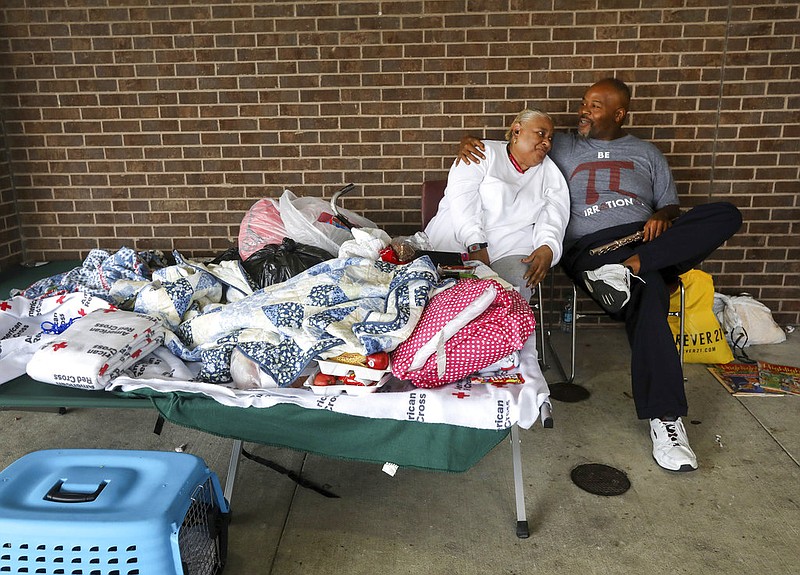The Missouri Red Cross is still in response mode in the wake of Hurricane Harvey, according to David Griffith, the Central and Northern Missouri chapter's executive director, and as of Thursday, preparations were being made for Hurricane Irma's impact in Florida.
In some Texas communities, though, they've moved on to recovery work.
As of Thursday, he said 88 people had deployed from the Eastern Missouri chapter of the Red Cross - 77 people to Texas and Louisiana and 11 others Wednesday to Florida ahead of Irma.
He said the Red Cross is big enough and has the assets to handle both storms' closely timed impacts to the U.S. and provide services that impacted communities need, though he added Harvey was certainly more than what the Red Cross could have handled on its own.
"We are known as the safety net," he said - arrive quickly, respond and then pass off work to partner agencies.
He's been coordinating the response in three Texas counties to the north and east of San Antonio: Comal, Gonzales and Guadalupe.
He communicates with local officials like mayors, city managers and city council members to give them accurate updates.
The area was not as affected by Harvey as communities closer to the coast along the Gulf of Mexico, but his area is being used to shelter evacuees until they can move back into their home communities.
Mobile feeding and cleanup kits were making it into areas that had been cut off because of water over roads.
As of last Wednesday, Griffith said the Red Cross had 32,000 people housed in 194 shelters in Texas and Louisiana. Supplies had been distributed to more than 90,000 people, and more than 850,000 meals and snacks had been served with 16 mobile kitchens - each one capable of serving 10,000 meals a day.
More than 200 emergency response vehicles were in Texas and Louisiana, and more were headed that way, plus vehicles bound for Florida.
While shelter operations probably won't last until Thanksgiving or December, he said case work, counseling and support of other partner agencies would last at least that long. "It's going to be ongoing for a while," he said of the response to Harvey.
He added after Hurricane Katrina, it took three or four years for affected communities to have some semblance of normalcy.
In terms of how people can help, he said financial support would continue to be critical, for continuing Harvey relief and for what Irma brings.
While he said the agency is trying to be respectful and avoid "donor fatigue," he added "we're talking about people's lives" in the here and now.
One-on-one partnerships like a church in one community adopting another can work well for gathering and delivering material donations, but he said the best thing the general public can do is have a yard or garage sale, sell the items locally and then donate the proceeds.
"We just don't have the capacity to collect all that, transport it and warehouse it down here," he said. He added one warehouse in San Antonio was already completely full of clothes. "The best thing to do would be to write a check."

